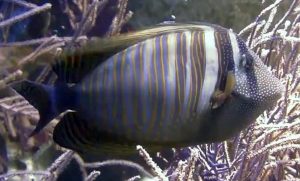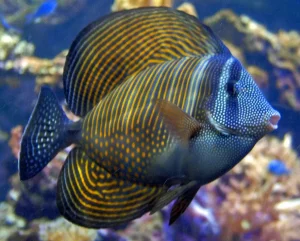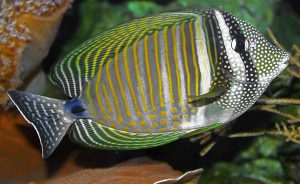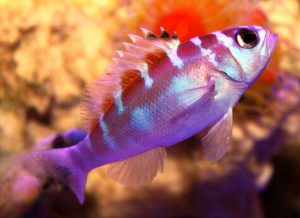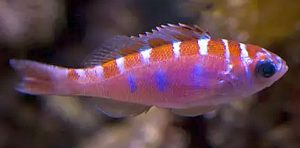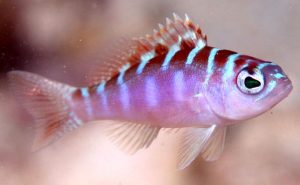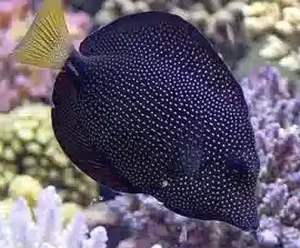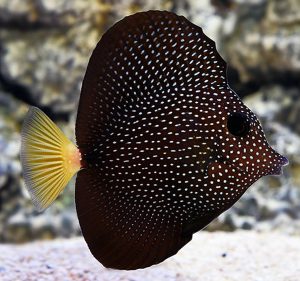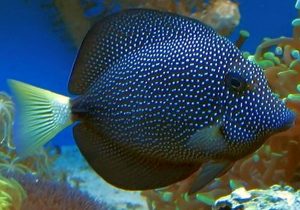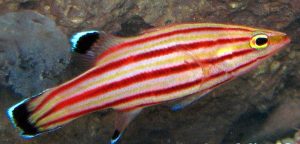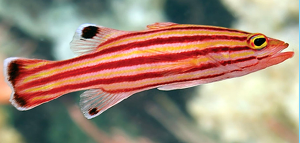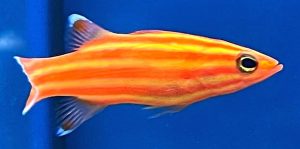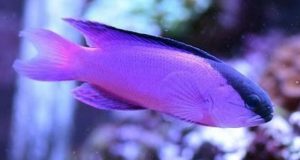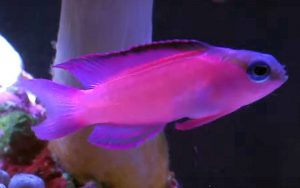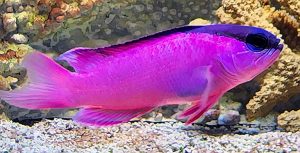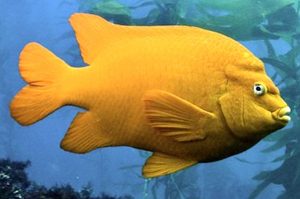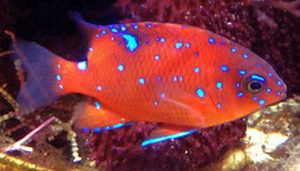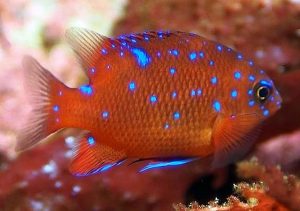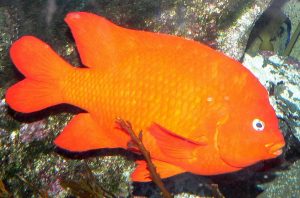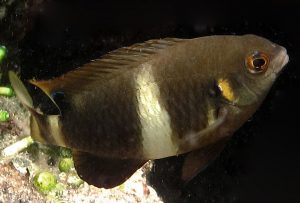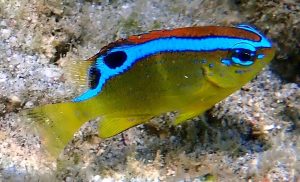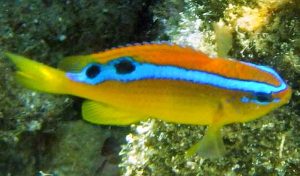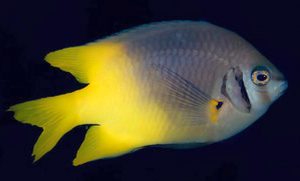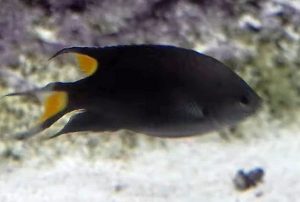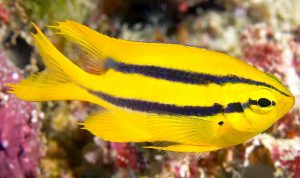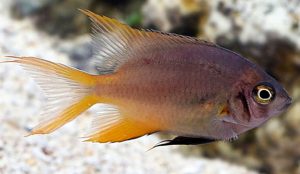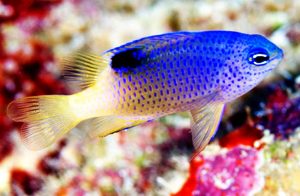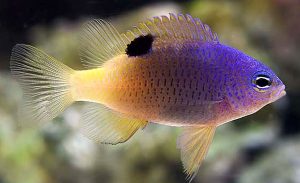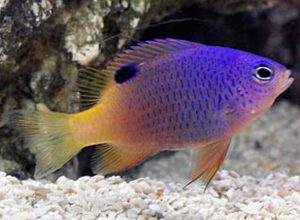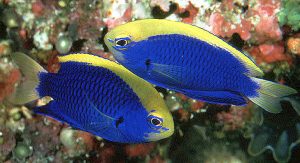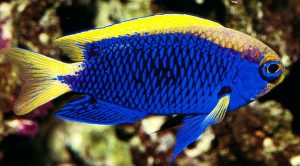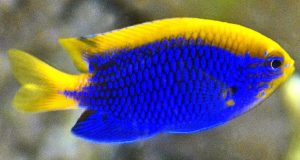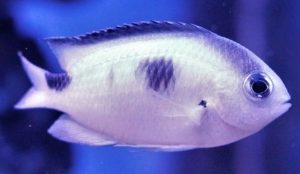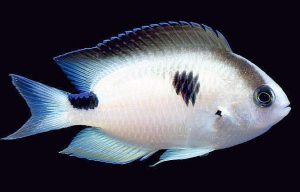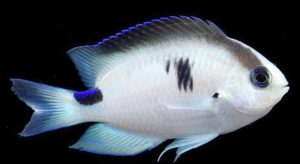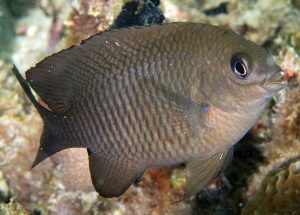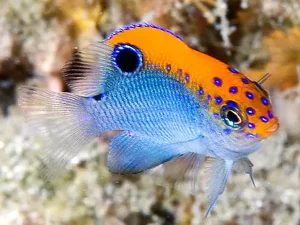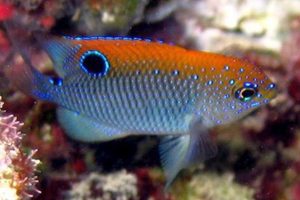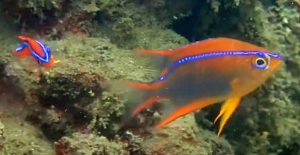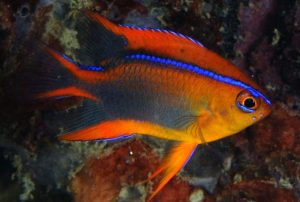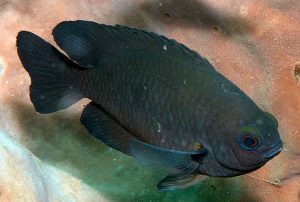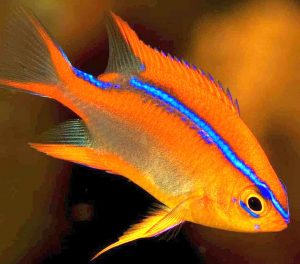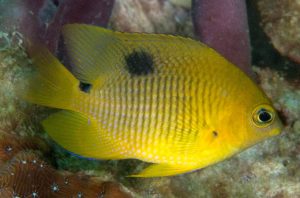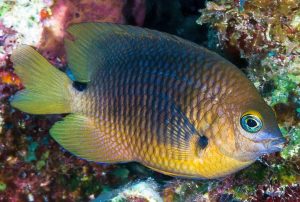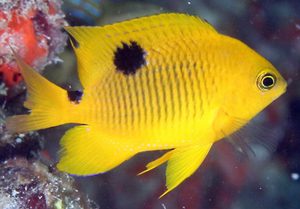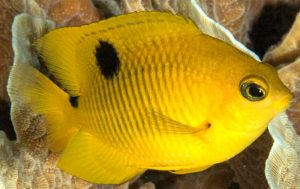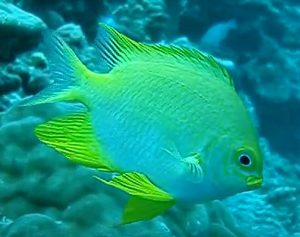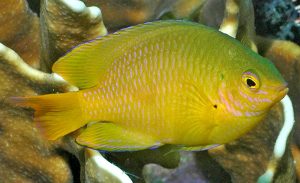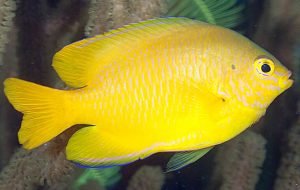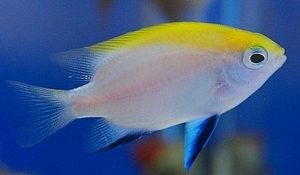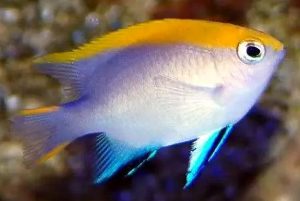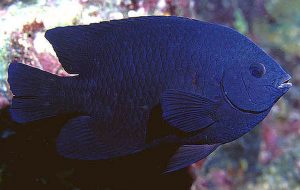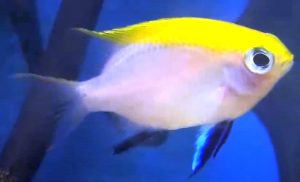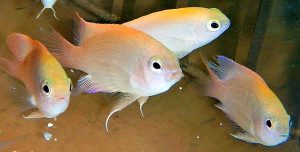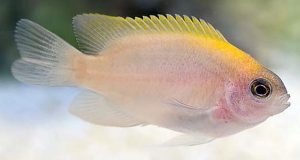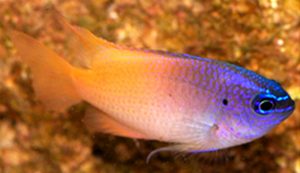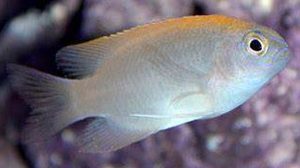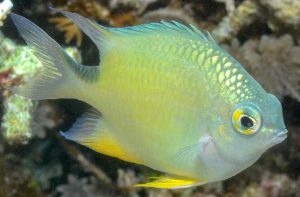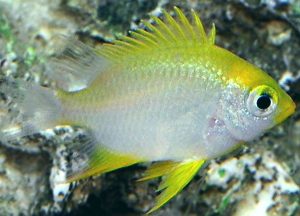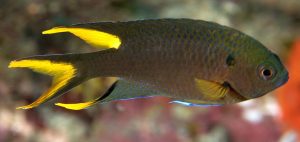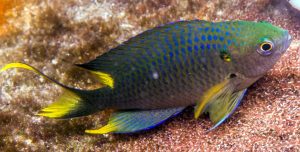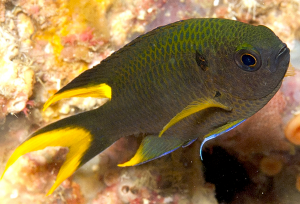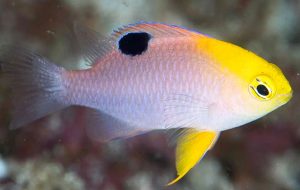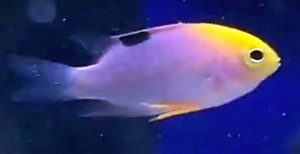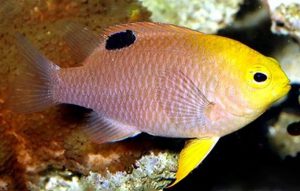The Red Sea Sailfin Tang (Zebrasoma desjardinii) known by tropical fish keeping enthusiasts as Indian Ocean Sailfin Tang, Desjardin’s Sailfin Tang, and Desjardini Sailfin Tang is widespread throughout the Indian Ocean from the northern Red Sea to KwaZulu-Natal Province in South Africa, and east to India and Java.
Adult Red Sea Sailfin Tangs are normally encountered in pairs on the tropical reefs and lagoons of their range at depths from 6 to over 100 feet feeding on filamentous algae, a variety of macroalgae, plankton, and in the Red Sea; Scyphozoa and Ctenophora jellyfish. Juveniles are more solitary and prefer living in the shallower inner reefs.
The colors in Red Sea Sailfin Tangs frequently vary from individual to individual, depending on age.
In general Red Sea Sailfin Tangs have an oval shaped body with large, very high, dorsal and anal fins. The uper portion of the body is covered with alternating orange and dark blue vertical bands and a larger blue band on the eyes. The head and ventral area is covered with numerous white spots, the belly is covered with orange spots, and the dorsal and anal fins have a pattern of alternating horizontal orange and blue bands. The caudal fin is covered with white spots and darker lines. In the middle of the caudal peduncle on each side of the caudal fin, they have a dark spine surrounded by a dark blue area that is used for defense. Males are typically larger than females.
Another color variation has a dark to very light gray body color with light freckles on the nose and yellow spots on the
abdomen. The body and dorsal fin has several, varying sized vertical yellow and black stripes with intricate markings between the stripes at the face, the anal fin has numerous yellow spots, and the caudal fin is blue with white freckles.
Although adult Red Sea Sailfin Tangs (Zebrasoma desjardinii) and Sailfin Tangs (Zebrasoma veliferum) have easily recognizable color patterns; juveniles are almost indistinguishable in color and markings.
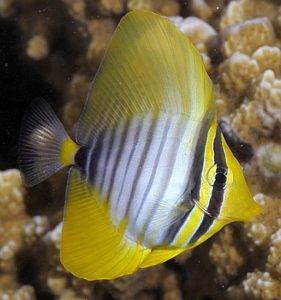 The juvenile forms of Zebrasoma desjardinii and Zebrasoma veliferum may not have spots on their fins or body, however as they grow into adulthood, the distinctive spots and bold striping on the fins and body will develop.
The juvenile forms of Zebrasoma desjardinii and Zebrasoma veliferum may not have spots on their fins or body, however as they grow into adulthood, the distinctive spots and bold striping on the fins and body will develop.
Red Sea Sailfin Tangs are best housed in a FOWLR or reef aquarium of at least 180 gallon capacity with a sand or crushed coral substrate, a copious amount of mature live rock for them to graze on and hide among, and plenty of free swimming space. Zebrasoma desjardinii are aggressive towards its own species and at times, conspecifics, but peaceful towards other fish of the same or larger size. Red Sea Sailfin Tangs are completely reef safe and make a great addition to large reef systems.
If its not possible to keep your Desjardini Sailfin Tang isolated from other tang species in a large tank, make sure to introduce all the tangs at the same time to minimize aggression. On the reef, Red Sea Sailfin Tangs are very territorial and are mostly encountered in pairs and as lone specimens .
Zebrasoma desjardinii are pair spawners that have not yet been successfully bred in an aquarium environment. This differs from the open water group egg scattering spawning activity typical of the family Acanthuridae. Because these fish do not get along with their own species, it’s difficult to keep them in the same tank long enough for them to breed.
In their natural habitat on the tropical reefs, Red Sea Sailfin Tangs are usually found grazing primarily on filamentous algae, several varieties of macroalgae, plankton, and in the Red Sea; Scyphozoa and Ctenophora jellyfish. In an aquarium environment they will pick on algae on mature live rock but it is important that they are fed plenty of marine based seaweed and algae to strengthen their immune systems, reduce aggression, and improve their overall health along with some meaty foods.
Dried Nori seaweed tied to a rock or on a veggie clip, Sea Veggies, Seaweed Salad, and Ocean Nutrition Seaweed Select are all ideal, easy to use products. Occasional feedings of brine shrimp, Mysis shrimp
, and finely chopped pieces of fresh shrimp, scallops, mussels, clam, etc. should also be offered to round out their diet.
Red Sea Sailfin Tang (Zebrasoma desjardinii) are available to tropical fish keeping enthusiasts from specialty fish shops, online wholesalers, retailers, and trans shippers at the following approximate purchase sizes: Tiny: 3/4″ to 1-1/2″; Small: 1-1/2″ to 2-1/2″; Small/Medium: 2-1/2″ to 3″; Medium: 3″ to 4″; Medium/Large: 4″ to 5″ Large: 5″ to 6″ XLarge: 6″ to 7″. Prices vary from under $129.99 for tiny specimens to $279.99 or more for XLarge to adults.
Minimum Tank Size: 180 gallons
Aquarium Type: Reef or FOLR
Care Level: Difficult
Temperament: Semi Aggressive
Aquarium Hardiness: Hardy
Water Conditions: 72-78° F, dKH 8-12, pH 8.1-8.4, sg 1.020-1.025
Max. Size: 16″
Color Form: Black, White, Yellow, Blue, Orange
Diet: Herbivore
Compatibility: Reef
Origin: Indian Ocean
Family: Acanthuridae
Lifespan: 5 to 7 years
Aquarist Experience Level: Intermediate


